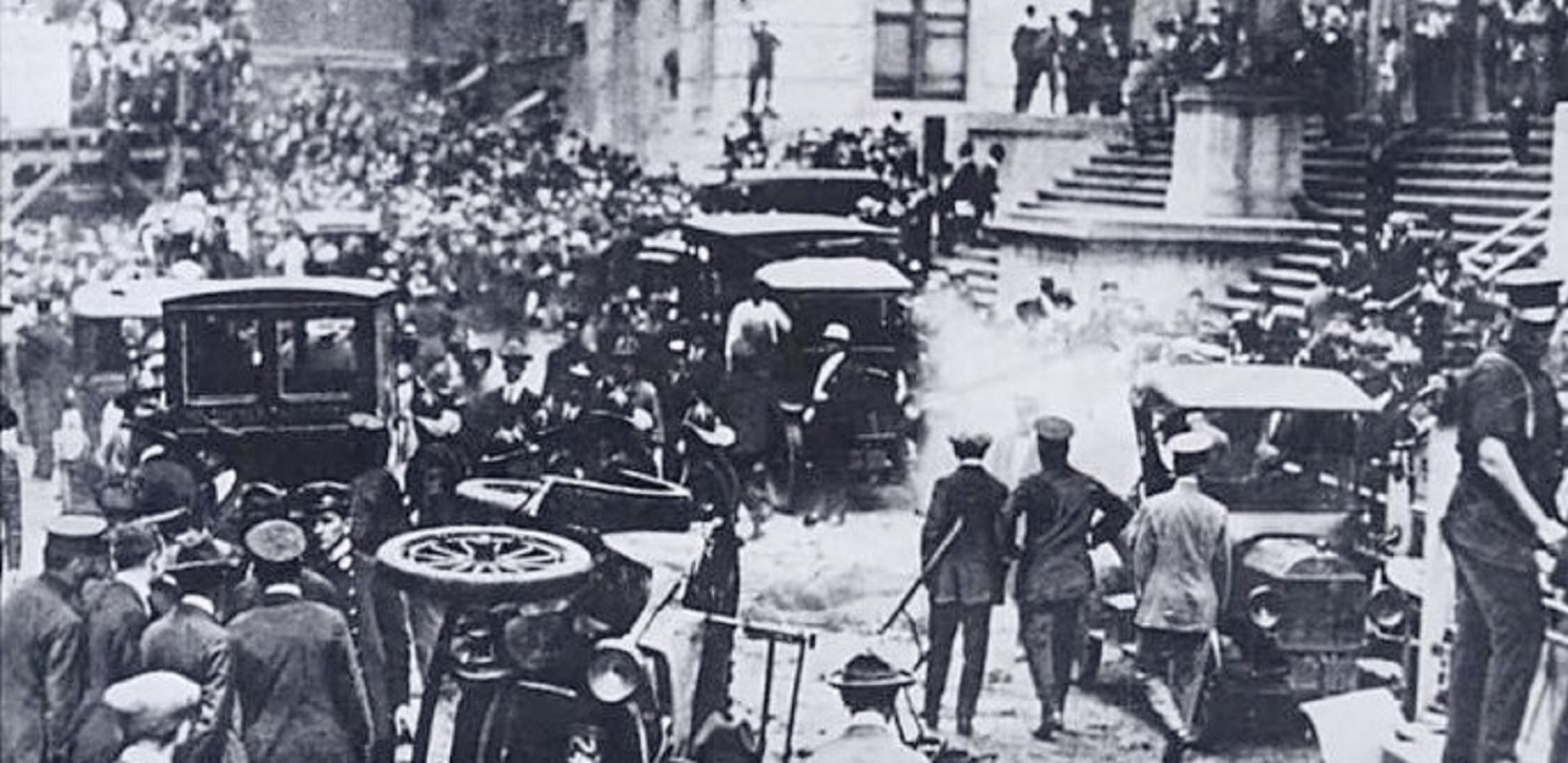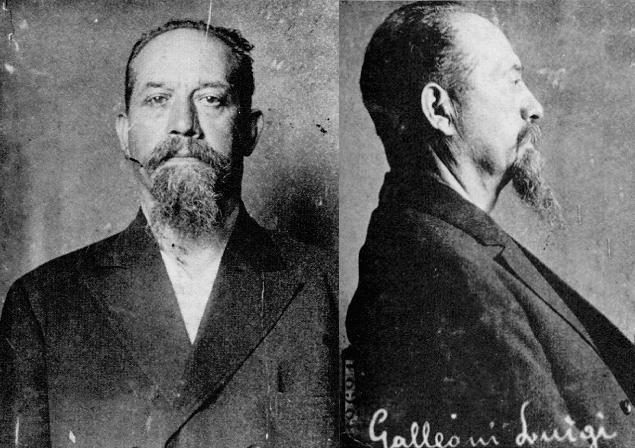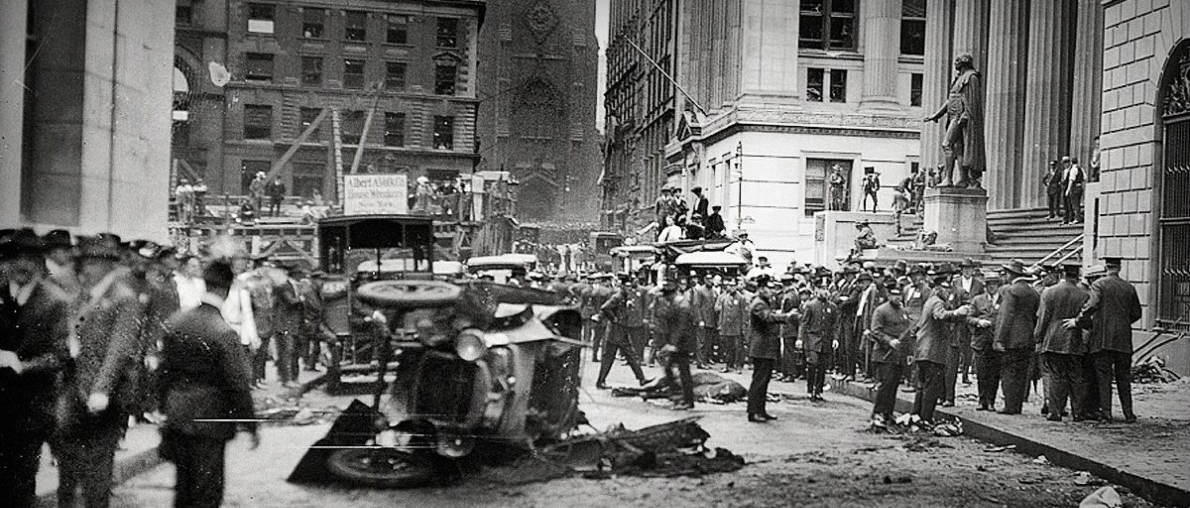Wall Street Bombing
Posted on 11th October 2021
At twelve o’clock in the afternoon of 16 September 1920, a horse and cart pulled up outside the JP Morgan Banking House on Wall Street in New York.
A minute later there was a massive explosion and when the smoke cleared 34 people lay dead amongst the debris, a further 5 would die later in hospital and more than 400 people were injured, 143 of them seriously.
Then, as now, Wall Street was not only New York’s financial district but stood at the heart of a global economy. That such a thing could happen here of all places was unthinkable and people, still clearly stunned, thought it could only be the result of a tragic accident.
The Board of the Stock Exchange resolved to continue business as usual the following day once the clean-up had been completed. But further investigations were soon to prove that it had been no accident.
The Bureau of Investigation, the forerunner of the F.B.I, discovered leaflets and flyers in the vicinity that threatened violence and destruction if certain political prisoners were not released. A further search found traces of a bomb that it was estimated had been packed with 100 pounds of dynamite and 500 pounds of large and small metal fragments that would have served as shrapnel thereby maximising the carnage.

The clean-up ordered earlier however, hampered any effective forensic analysis of the crime scene.
America at the time was not only undergoing a renewed surge in immigration from Europe as a result of the First World War but was in the midst of a “Red Scare” following the Bolshevik Revolution in Russia and the ensuing spread of Communist ideology. The former was thought by many to be the cause and consequence of the latter.
Some of the leaflets found at the scene had been signed The Anarchist Fighters of America, and suspicion immediately fell upon one anarchist in particular, Luigi Galleani, an Italian who had escaped imprisonment in his home country by fleeing to Egypt before making his way to America.
He was an active revolutionary and a powerful and persuasive orator who believed that only violent action could overthrow the capitalist system, a view he expressed in his Cronaca Sovversiva, or Subversive Chronicle, which had over 5,000 subscribers but it rarely reached an audience beyond those in the radical Italian-American community.
His was not just an intellectual call to arms however, but a practical one and he had written a bomb-making journal.

Advocates of Gallieni’s brand of revolutionary anarchism were already thought to have been behind a wave of terrorist attacks that had swept across America in the months and years preceding the Wall Street bombing.
In 1916, a mass-poisoning had been attempted at a lavish party thrown in honour of a local Bishop that had attracted the great and good of the city of Chicago. The soup had been laced with arsenic and though no one was killed more than a hundred of the guests became seriously ill and had to be hospitalised. The following year 9 policemen were killed in a bomb attack in Milwaukee.
In 1919, 30 mail bombs were posted to prominent politicians and businessmen. Many of these were intercepted but 8 bombs were delivered and detonated in 8 different American cities killing 3 people.
The Wall Street Bombing was also believed to be linked to the arrest of two Italian immigrants, Nicola Sacco and Bartolemeo Vanzetti, who had been charged with a robbery in Braintree, Massachusetts that had resulted in the murder of two people. The evidence against both Sacco and Vanzetti were less than conclusive but both were known to be anarchists.
Many people believed them to be innocent of the crime and that they were in fact in prison for their political beliefs. It was thought that they may have been the political prisoners the leaflets were referring to.
Whilst it was thought that Gallieni, or at least his adherents, were responsible for the Wall Street Bombing he could not be directly implicated as he had been deported back to Italy the previous year. The prime suspect now became his bomb-maker, Mario Buda.
He had been present during the robbery in Braintree and was almost certainly responsible for the murder of the policemen in Milwaukee but even though he was known to have been in New York at the time of the Wall Street Bomb no attempt was made to apprehend him. In November 1920, he acquired a passport from the Italian Consulate and fled to Naples.
The Bureau of Investigation despite making, a number of arrests, were unable to secure enough evidence to bring charges, and the Wall Street Bombing remains an unsolved crime to this day.
Prior to the Oklahoma City bombing of 19 April 1995, when the Federal Alfred P Murrah building was destroyed and 168 people killed by terrorists linked to the American Militias, the Wall Street Bombing had been the most lethal single terrorist atrocity ever committed in the United States, though all such horrors have since been eclipsed by subsequent events.
Tagged as: Modern
Share this post:





